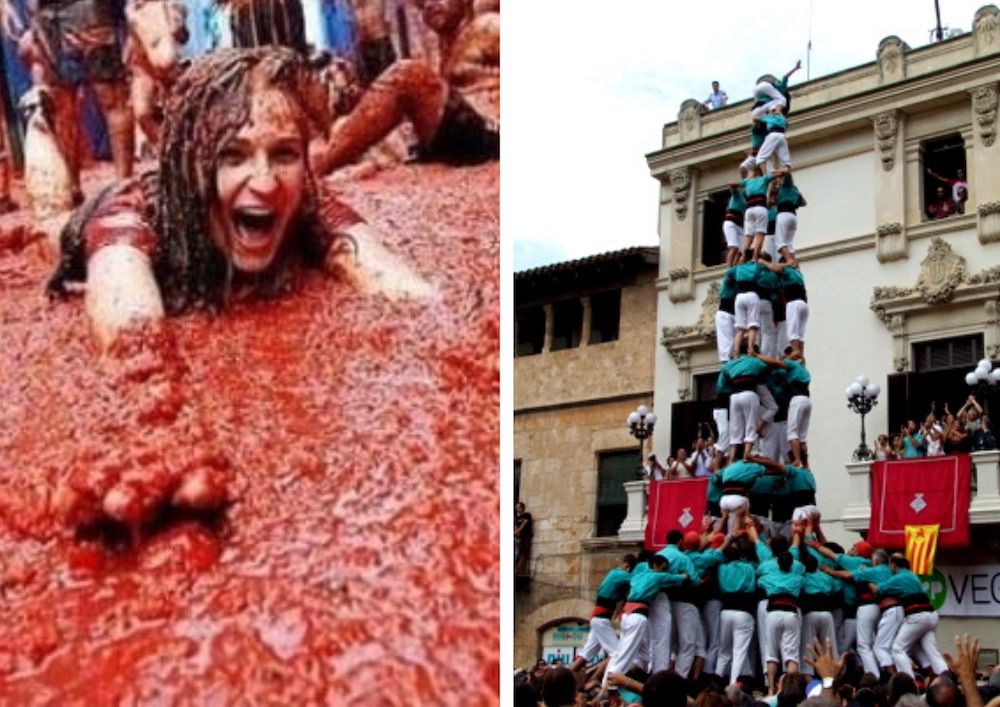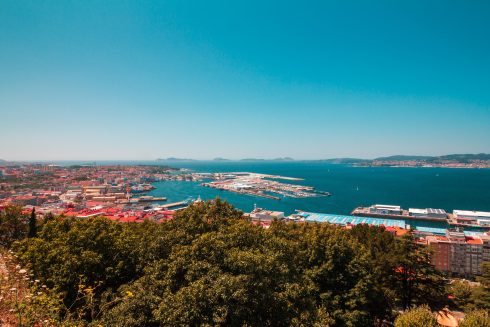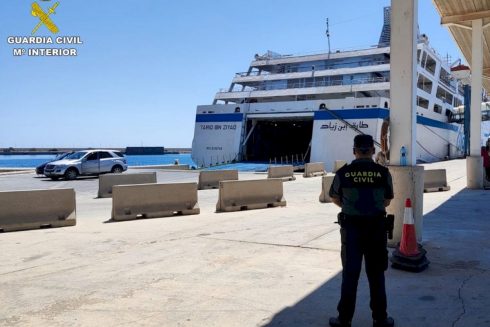TOURIST recommendations for Spain are so predictable.
A dip in the Med, stunning food, even better wine, and all on a backdrop of some era-defining castle or other.
You could spend a whole month like this – how boring.
Whatever happened to pre-GPS days of getting lost, misunderstanding a toothless local, and sharing your hotel room with a three-legged donkey called Manuela?
Luckily there still exist very weird tourist attractions in Spain that shake up the monotony of sun, sand and sangria.
From food fights to smurf towns, here are 14 of the weirdest tourist attractions in Spain.
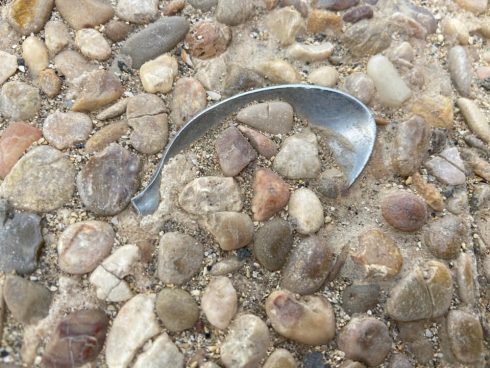
1. The spoon in Playa Blanca, Lanzarote
Playa Blanca is Lanzarote’s third-largest resort that boasts – as the name suggests – a beautiful white beach.
Yet tourists with at least three hours to kill have sent spoon hunting to the #10 top activity in Playa Blanca.
“Of course, there are far greater, more classical, places to visit around this wonderful island,” BBC presenter and author Will Millard told the Olive Press during a trip to Lanzarote.
“But there’s a lot to be said for places that somehow assume their own cultural currency, seemingly from nothing significant whatsoever. Forgetting even that though, my family loved hunting for that little spoon!”
According to TripAdvisor comments, there exists a legend that the spoon will grant the heir of Cesar Manrique (famous Lanzarote sculptor) ‘unimaginable power’ should he or she find it.
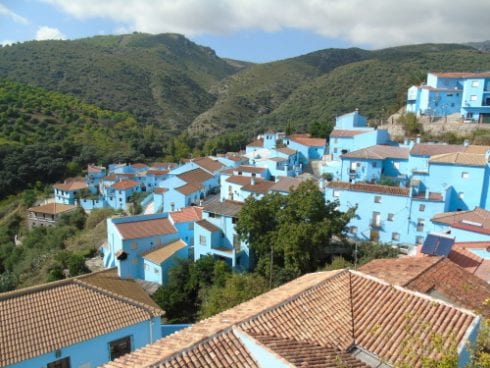
2. Smurf town in Juzcar, Andalucia
Juzcar is one of the smallest villages in the Valle del Genal near Ronda, in southern Andalucia.
Yet being small doesn’t mean being insignificant: Juzcar is famous for becoming the world’s first ‘smurf town’ in 2011.
Sony Pictures painted every single house blue – even the cemetery and Town Hall – to celebrate the premiere of The Smurfs 3D in Juzcar.
But after the premiere inhabitants saw an opportunity to bring a little income and attention to this forgotten part of southern Spain.
And it worked.
Juzcar receivers over 250 tourists each day, though following a 2017 dispute over royalties it’s officially known as ‘the blue town’ and not ‘the smurf town’.

3. La Tomatina, Buñol, Valencia
La Tomatina is a food fight like no other.
It’s believed to be the world’s largest food fight and makes use of at least 145 tonnes of tomatoes.
Taking place on the last Wednesday of August each year in Buñol, near Valencia, thousands of people come to turn the town of 9,000 inhabitants red.
Festivities start as soon as someone has shimmied up a two-storey high greased wooden pole to fetch a ‘ham’ at the top – of course.
Legend has it the tradition began in 1945 when some boys knocked the decorative head off a participant in a religious festival.
The headless giant careened into a vegetable stand, and the rest is history.
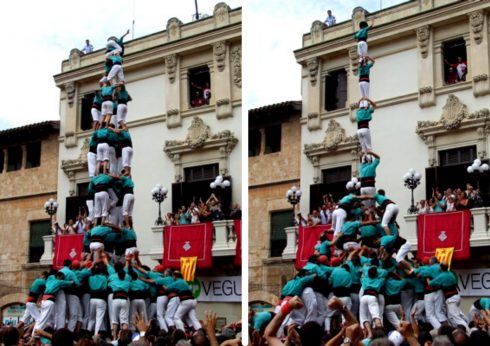
4. Human towers – Catalunya, Balearic Islands, Valencian Community
The human towers of Catalunya, Valencia and the Balearic Islands defy gravity.
During the 1980s, when women were included in castell building, human towers began reaching up to 9 and 10-people high.
This era was known as the ‘golden age’ of the Valencian and Catalan human towers, though you can still witness these incredible constructions during cultural events or holy days.
Only four recorded mortalities are known, and since 2006 children are required to wear a specially designed helmet.
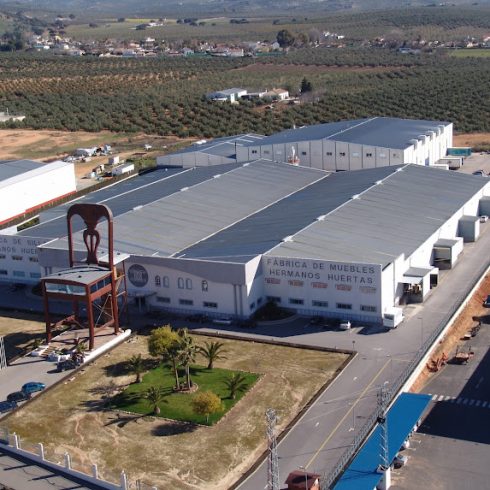
5. Second-largest chair in the world, Cordoba
Lucena is Cordoba was once famous for being home the world’s largest chair.
It was in April 2005 that furniture maker Grupo Huertas built the 26-metre high chair using up enough wood to make 9,200 regular-sized models.
Grupo Huertas’ website still claims they have ‘the world’s biggest chair’ but it’s sadly a misnomer.
The Guinness Book of Records has now given this illustrious title to an Austrian competitor at 30m tall, in St Florian.
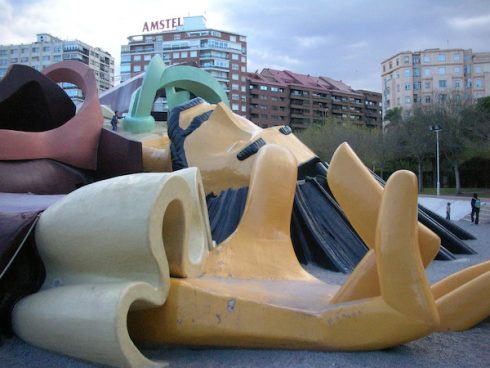
6. Gulliver travels to Valencia
Valencia’s dry riverbed is home to an enormous sculpture of Gulliver, from Jonathan Swift’s Gulliver’s Travels.
It’s an extremely popular playpark for kids, with all sorts of equipment, tunnels, slides, climbing frames and sculptures to entertain the little ones.
The sculpture itself is of Gulliver lying down and measuring some 70m from head to toe.
It was built in 1990 in the centre of Valencia.

7. Toxic lake in Galicia
The stunning blue waters of Monte Neme in Galicia became an Instagram sensation in 2019.
But this former tungsten mine owes its crystal blue waters to a heavy metals and toxins.
The lake is declared toxic and extremely dangerous to swimmers, but nothing can stand between influencers and their influencing it seems.
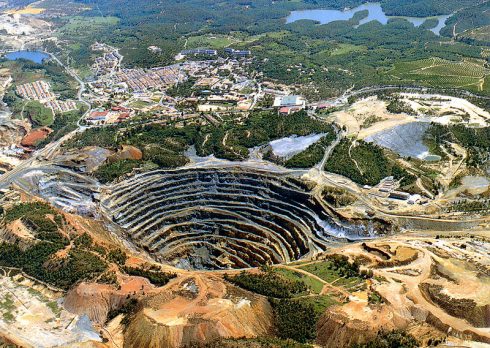
8. Rio Tinto, Andalucia
The Rio Tinto (‘red river’) in Huelva in southern Spain is considered the birthplace of the Iron and Copper ages.
At least 5,000 years of human history is recorded at these mines, frequented by Phoenicians, Greeks, Romans, Visigoths and Moors.
It’s now a favourite with NASA scientists exploring what life would be like on Mars.
The high iron content and acidity make the rivers unsuitable for swimming, but the long journey there through the Sierra de Aracena and Aroche natural parks make it a great natural adventure.

9. Chamber Pot Museum, Castilla y Leon
Literally called the ‘Urinal Museum’ (Museo del Orinal) this Spanish tourist attraction is weird like no other.
In Ciudad Rodrigo, western Spain, the museum is dedicated the history of the chamber pot.
Yes, you read that right: pots people have peed in.
Many of the pots come from the personal collection of a town resident, Jose Maria del Arco, which kind of makes it a lot stranger.
Since opening in 2006 the Museo del Orinal has launched a new exhibition of ‘spitting pots’ where people used to spit wine and tobacco.
A lovely day out for strange tourism in Spain.
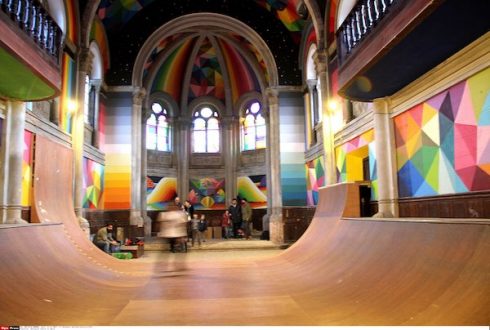
10. Skate park in a church, Asturias
Anyone who played too much Tony Hawk’s or Skate as a child will be happy to know there’s a skate park in a church in northern Spain.
To save Santa Barbara in Llanera from ruin, Red Bull sponsored a complete makeover.
Graffiti artist Okuda San Miguel painted the insides multicoloured, and now families can come to watch their children while also praying no one gets hurt.
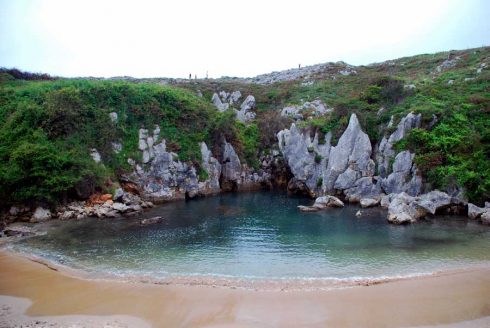
11. Playa de Gulpiyuri, Asturias
Playa de Gulpiyuri is officially a flooded sinkhole.
At just 40m not only is it one of the shortest beaches in the world, it’s also one of the strangest in Spain.
That’s because waves lap at both sides of the beach – from the Cantabrian Sea and from the flooded sinkhole inland.
It’s a very popular tourist destination, though the sinkhole water can be a touch cold!
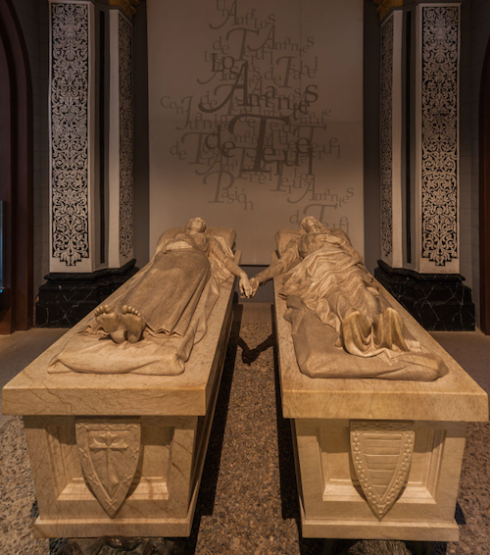
12. Amantes de Teruel, Aragon
Anyone visiting Teruel will know of the famous Lovers of Teruel.
This Spanish Romeo and Juliet tale is the story of two rich houses – the Marcilla and the Segura – and the troubled love of Juan de Marcilla and Isabel a Segura.
Diego’s family fell on hard times and Isabel’s father forbade the marriage, so Diego struck a deal to seek fortune within five years and win Isabel’s hand in marraige.
Diego did return, but arrived to celebrations of Isabel’s forced marriage to some other Don Pedro.
The Teruelite died from love-induced pains at Isabel’s feet, soon followed by Isabel.
The deaths affected Teruel so much that Diego and Isabel’s bodies were exhumed in 1560 and put on public display.
Yes, at the centre of the Lovers of Teruel are caskets containing two dead bodies.
The story has led to works of art and music, but it’s still one of the weirdest exhibits in Spain.
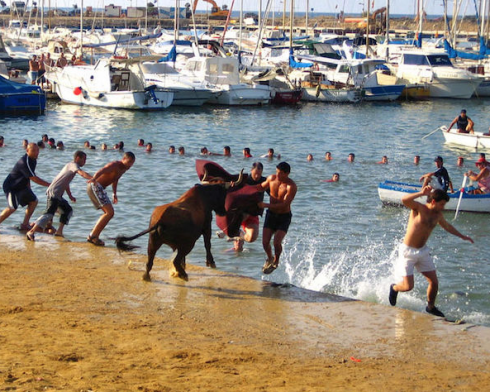
13. Bous a la Mar, Valencia and Alicante
Spain has many weird animal-related festivals.
Like the horse grappling (rapa de bestes) that takes place every year in Galicia.
One of more strange traditions takes place in various parts of Valencia and Alicante during the summer.
A bull or cow is let out into a stadium full of swimshort clad Valencians, who taint the bull into running at them.
Inevitably both humans and bull end up in the sea where specially trained assistants guide the 500kg animal back to land.
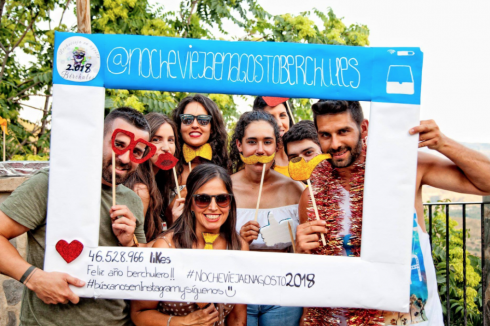
14. Two New Year’s in Berchules, Andalucia
The town of Berchules in Andalucia’s Sierra Nevada mountain range suffers from power outages.
During New Year’s Eve at the end of 1994, one of these outages ruined New Year’s Eve celebrations altogether.
So residents picked the most likely date where no power cuts would happen – in August.
Ever since Berchules has celebrated its ‘New Year’s Eve in August‘ and turned it into a Festival of Touristic Interest.
Every summer the town of just 800 people welcomes thousands of people, who join in with Spain’s tradition of eating 12 grapes at midnight and welcoming the Three Kings on horseback.
READ MORE:
- TRAVEL: Nine breathtaking UNESCO sites in Spain you should put on your bucket list
- Snails and thistles: These are the weird and wonderful regional Christmas dishes eaten across Spain
- ¡Feliz Navidad! These are the strangest Christmas traditions celebrated in Spain
- EXPLAINED: Could Alicante on Spain’s Costa Blanca really be the original home of Santa Claus?
- 15 genius Spanish words you just can’t translate into English

